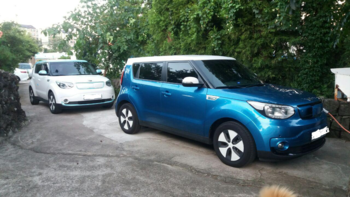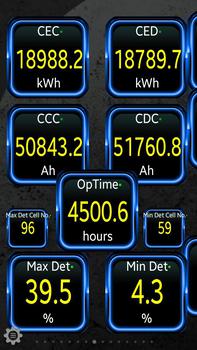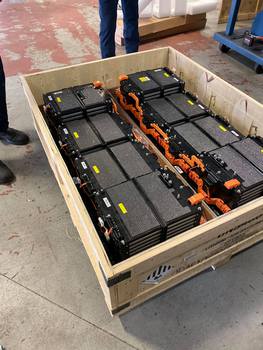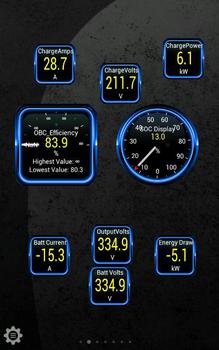-
I have a 2015 Soul EV that got a replacement battery under warranty.
This thread is for analysis of that battery.
In late July 2019 I bought a second 2015 Soul EV.The initial reading was 84.8% SOH. It had done 75,000km.

By October 2019 the SOH on that car had dipped below 70% and a replacement battery had been authorized. In 3 months I had driven 6,500km The SOH dropped 15%. Shockingly rapid!

In late December 2019 I had my replacement battery put in. In the 10 weeks I waited for the replacement I continued driving the car. I added another 5,500km. Oddly no further battery degradation was seen.
The new battery cells came in a large wooden crate. The battery case, the BMS, the wiring harness etc were all reused. The original cells were put into the crate and were sent back to SK Innovation.

The new battery continues to have 96 cell pairs, but these are now the MY2018 version. An upgrade from the E375 to the E400.

-
This manual is for the Kona EV and the new Ioniq EV
It is much the same as ours, but I'll replace it when I find ours.
PDF: Official Hyundai EV battery replacement procedure
-
I have a 2015 Soul EV that got a replacement battery under warranty.
This thread is for analysis of that battery.
In late July 2019 I bought a second 2015 Soul EV.The initial reading was 84.8% SOH. It had done 75,000km.

By October 2019 the SOH on that car had dipped below 70% and a replacement battery had been authorized. In 3 months I had driven 6,500km The SOH dropped 15%. Shockingly rapid!

In late December 2019 I had my replacement battery put in. In the 10 weeks I waited for the replacement I continued driving the car. I added another 5,500km. Oddly no further battery degradation was seen.
The new battery cells came in a large wooden crate. The battery case, the BMS, the wiring harness etc were all reused. The original cells were put into the crate and were sent back to SK Innovation.

The new battery continues to have 96 cell pairs, but these are now the MY2018 version. An upgrade from the E375 to the E400.

-
This manual is for the Kona EV and the new Ioniq EV
It is much the same as ours, but I'll replace it when I find ours.
PDF: Official Hyundai EV battery replacement procedure
-

